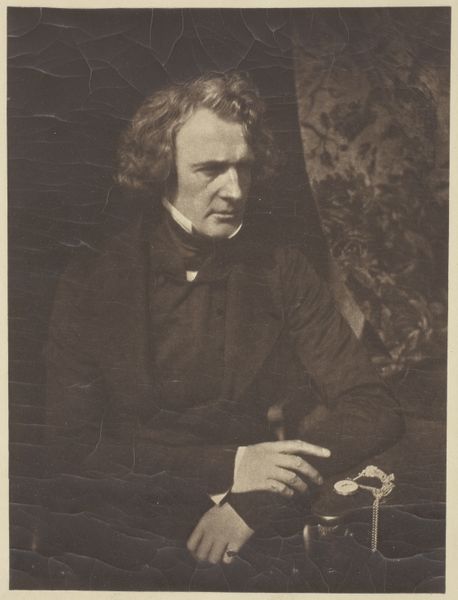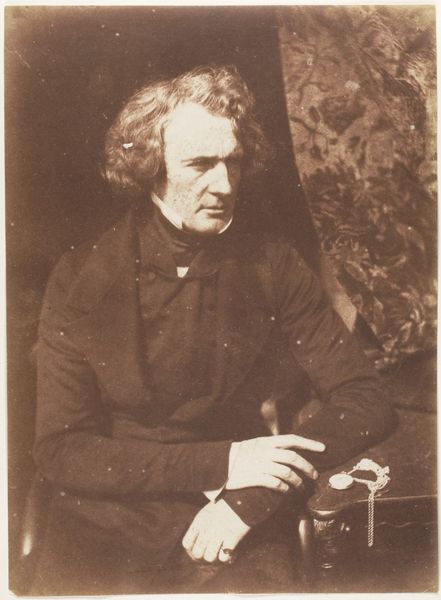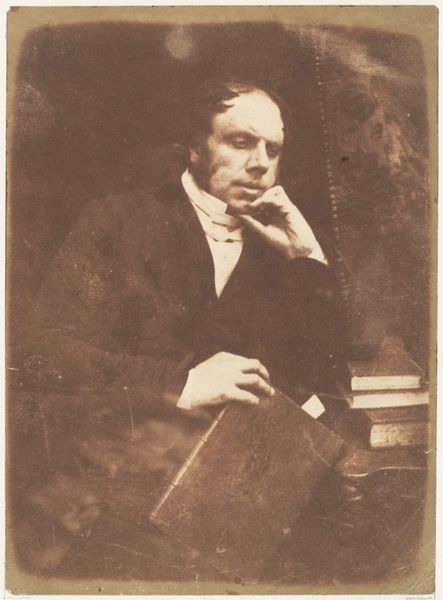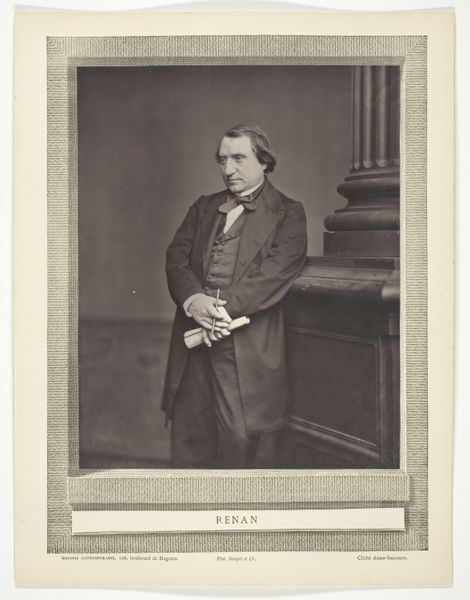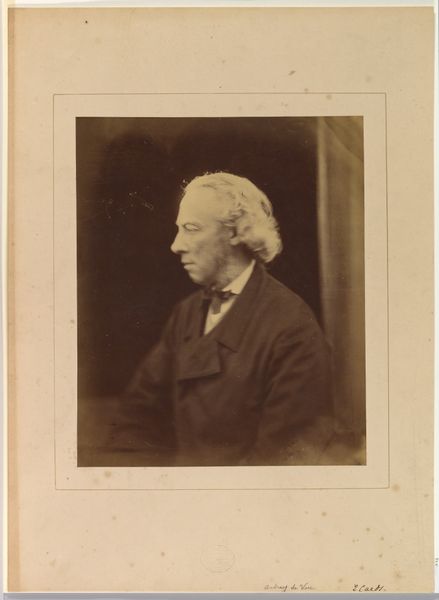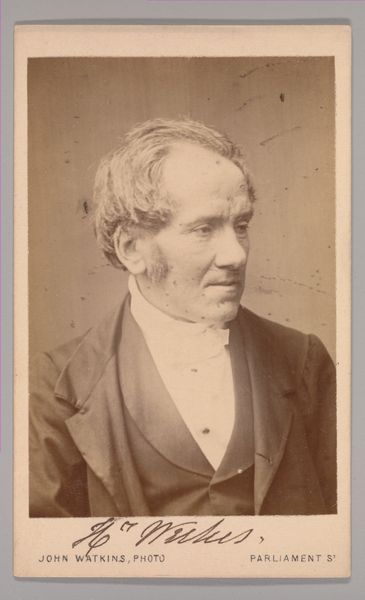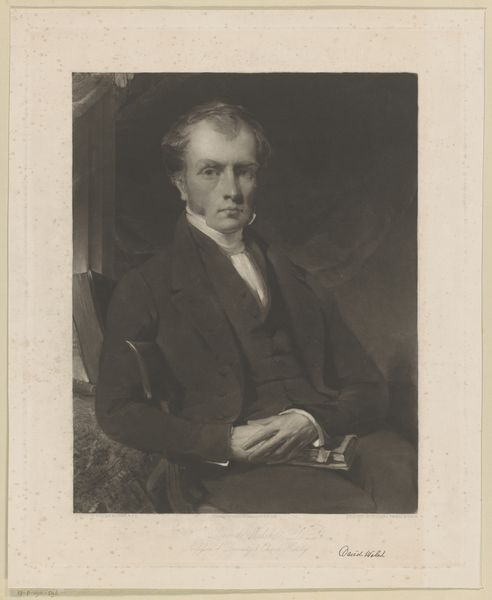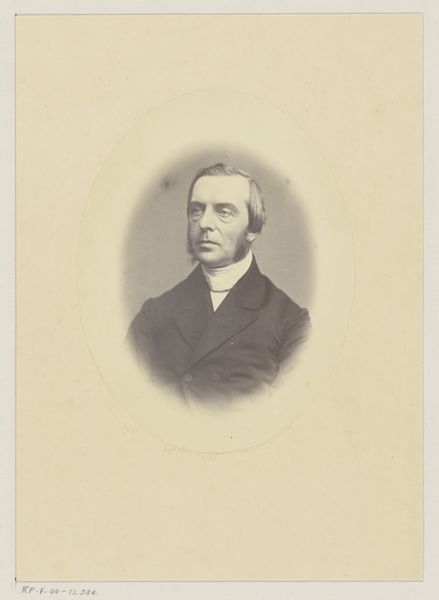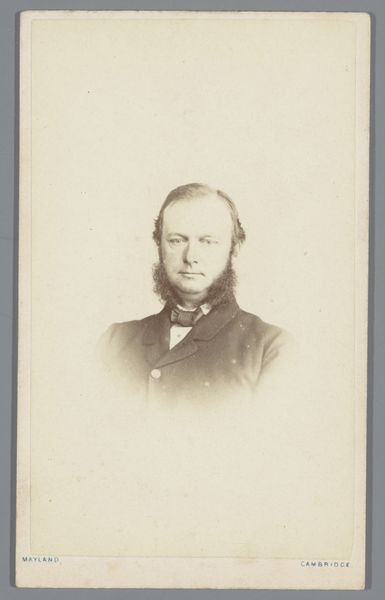![[The Lord Bishop of Winchester, Samuel Wilberforce] by Julia Margaret Cameron](/_next/image?url=https%3A%2F%2Fd2w8kbdekdi1gv.cloudfront.net%2FeyJidWNrZXQiOiAiYXJ0ZXJhLWltYWdlcy1idWNrZXQiLCAia2V5IjogImFydHdvcmtzLzljMTk4M2JhLTRlM2MtNDAyNy1hM2E1LTYxNzM0NDVhNjQyOS85YzE5ODNiYS00ZTNjLTQwMjctYTNhNS02MTczNDQ1YTY0MjlfZnVsbC5qcGciLCAiZWRpdHMiOiB7InJlc2l6ZSI6IHsid2lkdGgiOiAxOTIwLCAiaGVpZ2h0IjogMTkyMCwgImZpdCI6ICJpbnNpZGUifX19&w=3840&q=75)
[The Lord Bishop of Winchester, Samuel Wilberforce] 1872
0:00
0:00
Copyright: Public Domain
Curator: I’m immediately drawn to the softness of this gelatin-silver print, "[The Lord Bishop of Winchester, Samuel Wilberforce]" captured by Julia Margaret Cameron in 1872. It has an almost dreamlike quality. Editor: That softness, or some might call it blurriness, is characteristic of Cameron's work. It challenged the prevailing photographic standards of sharp focus and perfect clarity, questioning what makes a "good" portrait. But let's talk about Wilberforce, shall we? Curator: Oh, absolutely! I think there’s a sense of profound intellect etched on his face, don't you agree? It’s as though she's captured his soul in that single instant. He feels so... present. I wonder what he thought about the process, having to sit still for extended periods. Editor: I'm certain his perspective differed quite a bit from Julia’s. He was part of the British elite, and more than that he occupied a position of power within the established church. She may have had a genuine connection with her subjects, but it still perpetuated the norms of representing power. Curator: But surely you can’t deny the intensity in his eyes, or the way the light catches the lines on his face! Cameron was an artist and had her own way of seeing, it’s more than just reproducing a likeness. I mean, the romantic style imbues it with such personality. Editor: While the light is flattering and creates drama, it also hides, intentionally or not. I ask myself, whose gaze are we truly seeing reflected? Curator: Interesting point. There’s always so much more to unearth. Editor: Indeed. Each portrait provides not just a likeness of its subject, but serves as a potent glimpse into societal hierarchies, individual intentions, and the dynamics of visual representation itself. Curator: Thank you for offering your thoughtful reading of this striking portrait! It's certainly given me much to ponder.
Comments
No comments
Be the first to comment and join the conversation on the ultimate creative platform.
